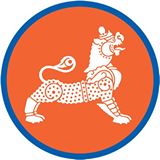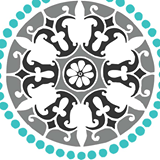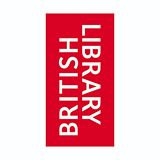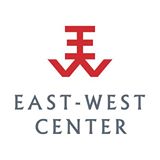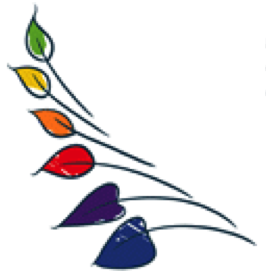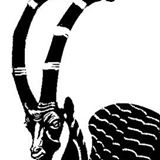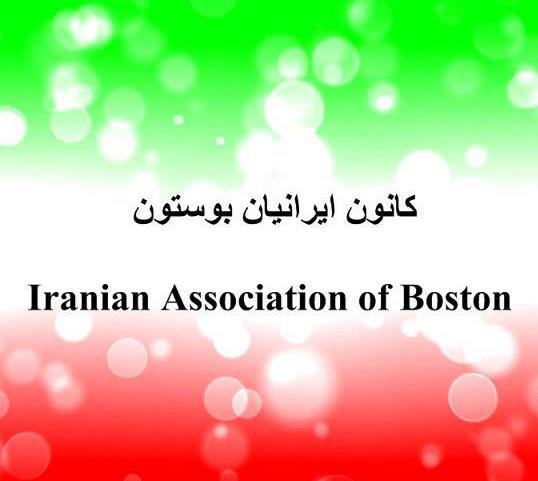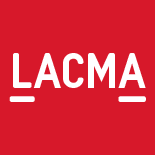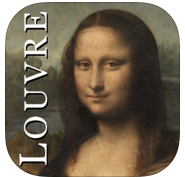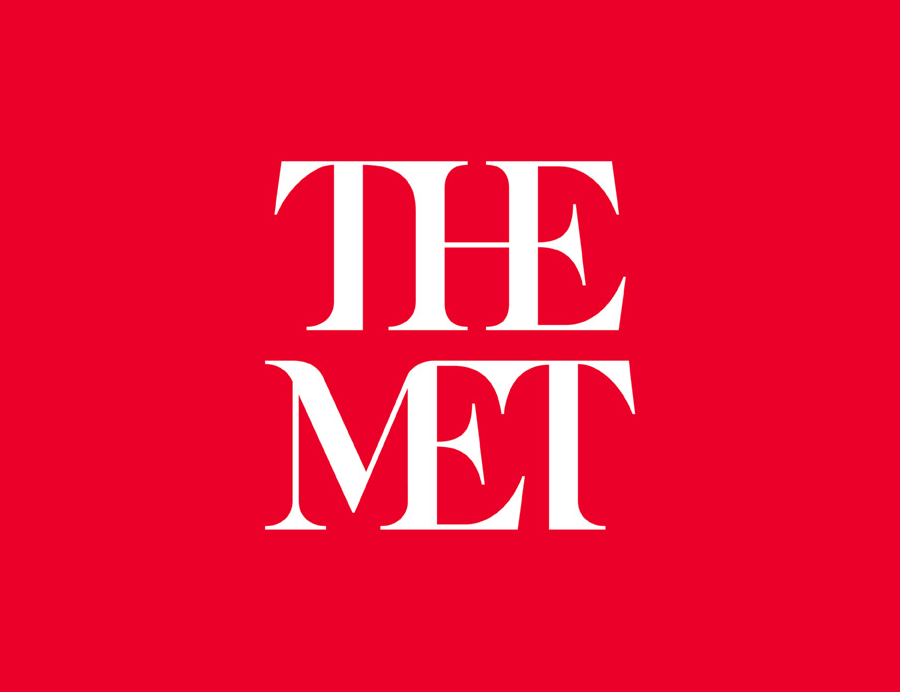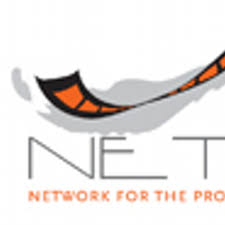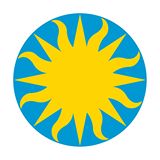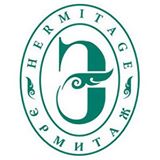Grants to Other Institutions
Roshan Cultural Heritage Institute is committed to supporting educational and public programs that highlight the richness, diversity and beauty of Persian culture. We have partnered with the following museums, institutions and non-profit organizations to achieve our mission.
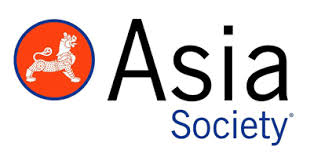
Asia Society is the leading educational organization dedicated to promoting mutual understanding and strengthening partnerships among peoples, leaders and institutions of Asia and the United States in a global context. Across the fields of arts, business, culture, education, and policy, the Society provides insight, generates ideas, and promotes collaboration to address present challenges and create a shared future. Asia Society Museum in New York organizes groundbreaking exhibitions of both traditional and contemporary Asian and Asian American art. The collection, universally described as “gemlike,” includes objects from cultures across Asia that date from the 11th century BCE to the 19th century CE.
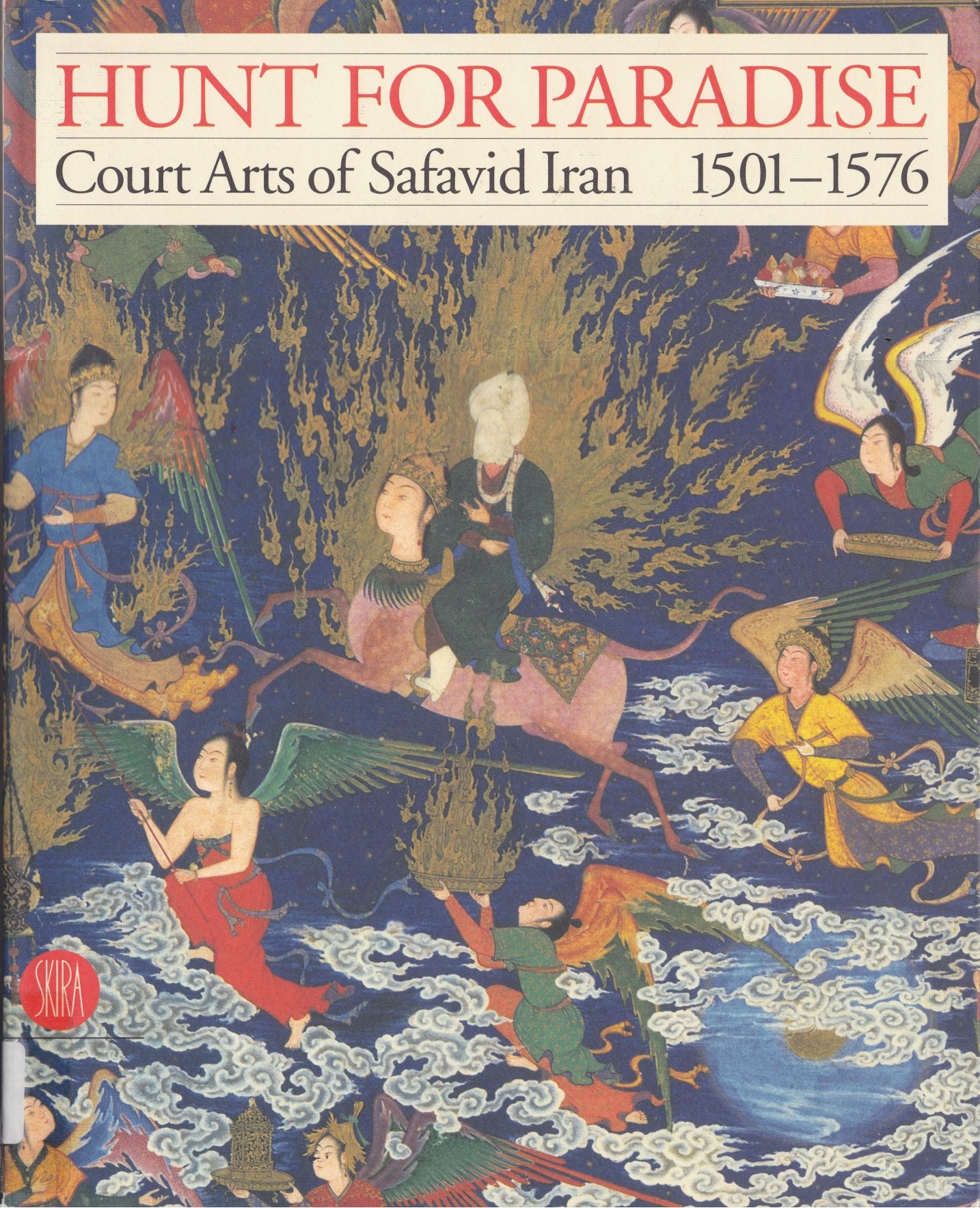 In 2003, Roshan Cultural Heritage Institute supported the exhibition, Hunt for Paradise: Court Arts of Iran 1501-1576, which was on view from October 2003 to January 2004 at Asia Society Museum in New York. Organized historically, the exhibition explored the development of the Safavid artistic style and the context in which it emerged, with a focus on the reigns of Shah Isma’il I (1501-24) and his son, Shah Tahmasp (1524-1576). It showcased spectacular objects from the Golden Age of Persian art and culture loaned from more than 30 public and private collections in Europe, North America and Asia. Hunt for Paradise was co-organized by Asia Society and Museo Poldi Pezzoli in Milan, and curated by Dr. Sheila Canby, Curator of the Department of Oriental Antiquities, The British Museum.
In 2003, Roshan Cultural Heritage Institute supported the exhibition, Hunt for Paradise: Court Arts of Iran 1501-1576, which was on view from October 2003 to January 2004 at Asia Society Museum in New York. Organized historically, the exhibition explored the development of the Safavid artistic style and the context in which it emerged, with a focus on the reigns of Shah Isma’il I (1501-24) and his son, Shah Tahmasp (1524-1576). It showcased spectacular objects from the Golden Age of Persian art and culture loaned from more than 30 public and private collections in Europe, North America and Asia. Hunt for Paradise was co-organized by Asia Society and Museo Poldi Pezzoli in Milan, and curated by Dr. Sheila Canby, Curator of the Department of Oriental Antiquities, The British Museum.

The Association for Iranian Studies (formerly known as The International Society for Iranian Studies) supports and promotes the field of Iranian Studies at the international level. Its objectives are to promote high standards of scholarship in the field, to encourage the teaching of Iranian Studies, and to encourage and facilitate scholarly exchange. The organization publishes Iranian Studies, a journal that continues to serve as the principal journal in the field.
In 2018, Roshan Cultural Heritage Institute sponsored the Twelfth Biennial Iranian Studies Conference scheduled on August 14-17, 2018, at the University of California, Irvine. The conference was successfully hosted by UCI Samuel Jordan Center for Persian Studies and Culture, directed by Professor Touraj Daryaee.
In 2016, Roshan Cultural Heritage Institute awarded a grant to sponsor the Eleventh Biennial Iranian Studies Conference, held on August 2-5, 2016, at the University of Vienna, Austria. The conference was hosted by the Institute for Iranian Studies of the Austrian Academy of Sciences. The event had 460 attendees from 30 countries and 108 panels. Several sessions were livestreamed and the Opening Ceremony was videotaped.
A Roshan Cultural Heritage Institute grant supported the Tenth Biennial Iranian Studies Conference scheduled on August 6-9, 2014, in Montréal, Canada. The conference was hosted by the Centre for Iranian Studies at Concordia University (whose Director, Professor Richard Foltz, is the Conference Chair) and the Institute of Islamic Studies at McGill University. This event had 460 attendees from around the world and 100 panels.
Roshan Cultural Heritage Institute supported the Eighth Biennial Iranian Studies Conference, held in Santa Monica, California, on May 27-30, 2010. The conference was one of the most important events in Iranian Studies and included over 200 speakers and presenters from major universities throughout North America and the world.
Roshan Cultural Heritage Institute supported the Fourth Biennial Iranian Studies Conference, held on May 24-26, 2002.
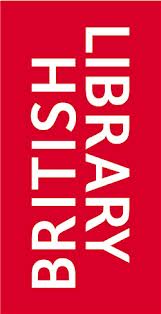
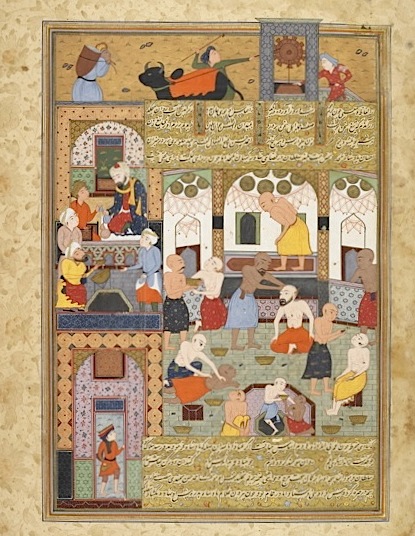 In 2013, Roshan Cultural Heritage Institute awarded a grant to the British Library to support the Persian manuscript project which aims to digitize and put online its collection of Persian manuscripts. The Library’s holding is one of the most significant collections in the world in terms of both its size and importance. Consisting of over 11,000 works in almost as many volumes, it combines the two world-class collections of the British Museum and the India Office Library. These manuscripts originate from the whole of the Persian-speaking world, in particular Iran, Central Asia and India and range in time from the 12th century to recent years, representing most of the traditional fields of humanities and religious studies. Many of the Persian manuscripts are copies of rare texts, with examples of some of the finest illustrated Mughal, Timurid and Safavid paintings.
In 2013, Roshan Cultural Heritage Institute awarded a grant to the British Library to support the Persian manuscript project which aims to digitize and put online its collection of Persian manuscripts. The Library’s holding is one of the most significant collections in the world in terms of both its size and importance. Consisting of over 11,000 works in almost as many volumes, it combines the two world-class collections of the British Museum and the India Office Library. These manuscripts originate from the whole of the Persian-speaking world, in particular Iran, Central Asia and India and range in time from the 12th century to recent years, representing most of the traditional fields of humanities and religious studies. Many of the Persian manuscripts are copies of rare texts, with examples of some of the finest illustrated Mughal, Timurid and Safavid paintings.
This project is led by Ursula Sims-Williams, Lead Curator of Persian, who has organized exhibitions such as “Mughal India: Art, Culture and Empire” and “The Everlasting Flame: Zoroastrianism in History and Imagination.” The initial cataloguer, Dr. Nur Sobers-Khan, is a specialist of the social and cultural history of the Islamic World. She was named Curator at the Museum of Islamic Art in Qatar in 2014 and Dr. Saqib Baburi succeeded her as the new Iran Heritage Foundation Curator of Persian Manuscripts at the British Library.
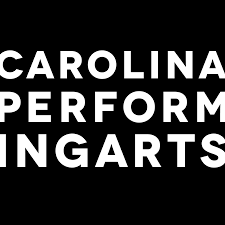
Established in 2005 at the University of North Carolina at Chapel Hill, Carolina Performing Arts (CPA) presents the very best from the full spectrum of the performing arts: internationally renowned recitalists and orchestras, chamber ensembles, jazz, folk, and world music artists, dance and theater.
In 2016, Roshan Cultural Heritage Institute provided a grant to CPA in support of the 2016-2017 Persian Arts Series, in collaboration with the university’s Persian Studies Program under the leadership of Professor Carl Ernst. Featured performances included avant-garde Iranian composer and vocalist Sussan Deyhim‘s acclaimed production The House is Black, on October 28, 2016, which nearly 700 people attended. The House is Black is inspired by the life and work of the legendary Iranian poet and filmmaker Forough Farrokhzad. On February 10, 2017, to celebrate the 80th birthday of American composer Philip Glass, CPA presented Philip Glass and Laurie Anderson‘s Words and Music, featuring a libretto from the works of 13th-century Sufi poet Rumi. The performance was a success, with nearly 1,300 in attendance.

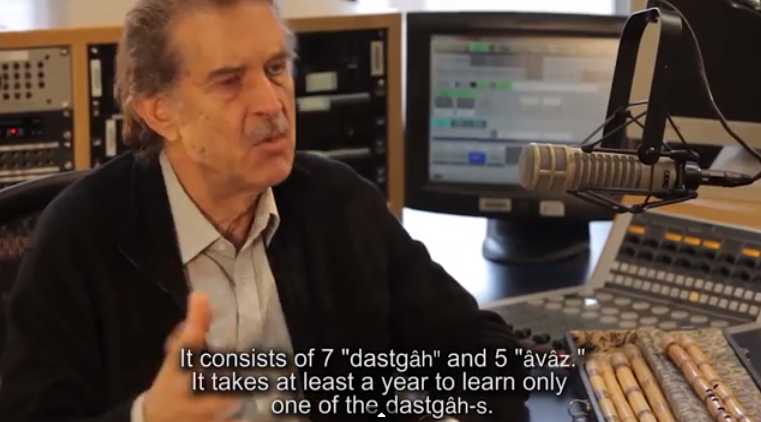 Documentary Educational Resources (DER) is a nonprofit organization founded in 1968 for the purpose of producing and distributing cross-cultural documentary film for educational use. Its mission is to promote thought-provoking documentary film and media for learning about the people and cultures of the world.
Documentary Educational Resources (DER) is a nonprofit organization founded in 1968 for the purpose of producing and distributing cross-cultural documentary film for educational use. Its mission is to promote thought-provoking documentary film and media for learning about the people and cultures of the world.
In 2013, Roshan Cultural Heritage Institute awarded a grant to DER in support of a documentary on Professor Hossein Omoumi, Maseeh Professor in Persian Performing Arts at the University of California, Irvine, and acclaimed musician and scholar. This initiative resulted in the production of the documentary film, “Classical Persian Music: Hossein Omoumi from Isfahan to Irvine,” as well as the development of educational materials by Professor Omoumi to facilitate learning and understanding of classical Persian music. Those interested in learning about the history, features and characteristics of Persian music can visit pish-radif.com.

The East-West Center focuses on collaborative, high-quality programs that expand knowledge, address critical policy issues and build capacity in the region. A hallmark of the East-West Center’s approach is that it engages Americans and counterparts from Asia and the Pacific in cooperative research, dialogue and educational activities.
In 2015, Roshan Cultural Heritage Institute awarded a grant in support of the Exhibition, Parsi Silk and Muslin from Iran, India and China, held at the EWC Gallery from October 11, 2015 to January 24, 2016.
Roshan Cultural Heritage Institute made possible a concert on April 7, 2013 by Voices of Afghanistan, who bridges three generations of the finest traditional musicians from Afghanistan and Central Asia. Legendary Afghan songstress Ustad Farida Mahwash represents the country’s “golden age” of music–the 1970s. She was accompanied by composer, rubâb master and vocalist, Homayoun Sakhi, and the Sakhi Ensemble, who specializes both in the rich folkloric and classical traditions of Afghanistan and in bold contemporary works.
In 2011, a Roshan Institute Fellowship for Excellence in Persian Studies supported a research internship by Azadeh Davari on the subject of “Observation of Different Interpretations of Islam.”
In 2009-2010, 2011-2012 and 2015-2016, Roshan Cultural Heritage Institute also supported the Asia Pacific Leadership Program (APLP), which links advanced and interdisciplinary analysis of emergent regional issues with experiential leadership learning. The APLP is widely recognized as a center of excellence for leadership education and a signature program of the East West Center. The success of 2009-2010 fellow, Azadeh Davari, led her to a research internship with Energy Economics from June 2010 – December 2010 and since, to pursue a M.A. degree in Nonprofit Leadership and Management at the University of San Diego. 2011-2012 fellow Davood Khoshniyat was offered an internship in the Department of Islamic Art at The Metropolitan Museum of Art in New York during the Spring 2012 semester, where he continued his research on Persian art. The 2015-2016 fellow is Maryam Rahaseresht, an Iranian artist, writer, director and actress, who is passionate about protecting indigenous forms of theater.
Roshan Cultural Heritage Institute has supported the Senior Journalists Seminar (SJS) since 2009. For the past several years, this EWC program has been shaping new perspectives and broadening thinking among journalists on complex and emotional issues. The program has produced evidence that narrow attitudes can be broadened through people-to-people contact between the Islamic and non-Islamic worlds.

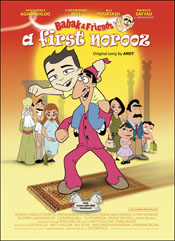 The Education and Diversity Foundation (EDF) is a nonprofit organization with the mission of building tomorrow’s leaders through education. EDF supports projects that teach tolerance, diversity, understanding and equality. Most of its endeavors to date use entertainment and art as a medium for communication.
The Education and Diversity Foundation (EDF) is a nonprofit organization with the mission of building tomorrow’s leaders through education. EDF supports projects that teach tolerance, diversity, understanding and equality. Most of its endeavors to date use entertainment and art as a medium for communication.
In 2007, Roshan Cultural Heritage Institute provided a grant to support the production of a second film in the “Babak & Friends“ series and of “Mixed Nutz“ by Norooz Productions (now Big Bad Boo Studios). The “Babak & Friends” series teaches children and parents alike about the beauty and richness of Persian culture, and encourages a better understanding of meaningful cultural differences among people. “Babak & Friends – A First Norooz” went a long way in achieving this initiative. The creative team on the “Mixed Nutz” production, which expands on Babak’s experience by including characters (his friends) from a variety of cultural backgrounds in his journeys, is comprised of the industry’s best talent from Pixar, Nickelodeon, Warner Brothers, and Disney.
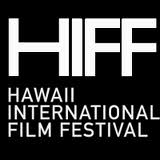
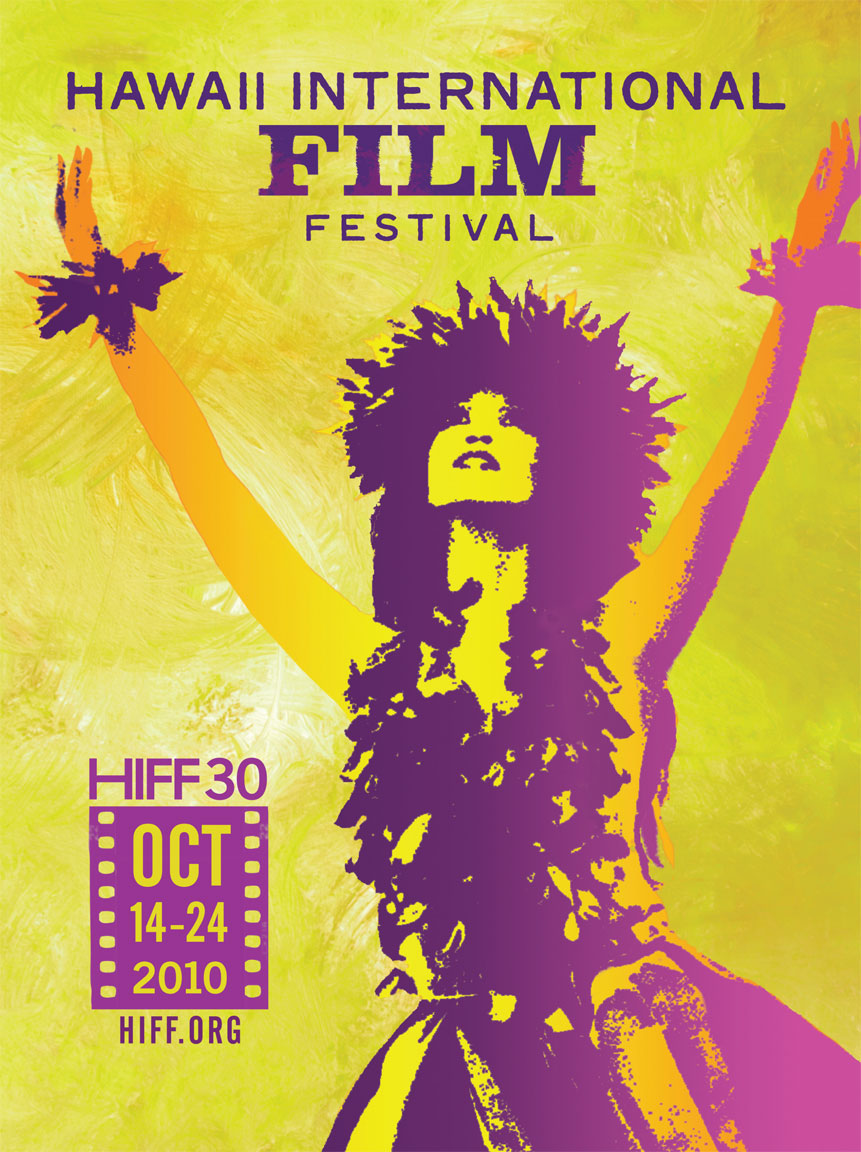 Hawaii International Film Festival (HIFF) endeavors to recognize new and emerging talent, promote career development and original collaborations through innovative education programs, and facilitate dynamic cultural exchange through the cinema arts in the Asia-Pacific region. HIFF is a premiere cinematic event in the Pacific and annually attracts more than 70,000 film enthusiasts from around the state, the nation and throughout the world. Roshan Cultural Heritage Institute sponsored the “Persian Lens” section of the 30th Annual Hawaii International Film Festival, held from October 14-24, 2010.
Hawaii International Film Festival (HIFF) endeavors to recognize new and emerging talent, promote career development and original collaborations through innovative education programs, and facilitate dynamic cultural exchange through the cinema arts in the Asia-Pacific region. HIFF is a premiere cinematic event in the Pacific and annually attracts more than 70,000 film enthusiasts from around the state, the nation and throughout the world. Roshan Cultural Heritage Institute sponsored the “Persian Lens” section of the 30th Annual Hawaii International Film Festival, held from October 14-24, 2010.

For the past half century, the Honolulu Chamber Music Series (HCMS) has brought top-flight international ensembles to perform on O‘ahu. Roshan Cultural Heritage Institute awarded HCMS a grant to support a series of public performances by Kayhan Kalhor in October 2012. Kayhan Kalhor is an internationally known master of Persian music and one of the greatest living players of the kamancheh, a four-stringed, upright Persian fiddle that’s tuned like a violin but has a darker tone. He has toured the world as a soloist with ensembles including the New York Philharmonic, the Orchestre National de Lyon, and the Silk Road Project, of which he was an original member.
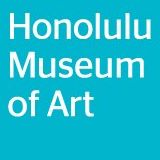
Founded in 1927, the Honolulu Museum of Art is Hawai‘i’s largest private presenter of visual arts programs, with an internationally recognized collection of more than 50,000 works spanning 5,000 years. In addition, film and concert programs, lectures, art classes and workshops make the museum the city’s cultural hub. Since 2009, Roshan Institute has supported the development of public programs that bring to light the importance of Persian art and culture.
In 2015, Roshan Cultural Heritage Institute supported Shahnameh: The Epic of the Persian Kings, an exhibition of Iranian filmmaker and graphic designer Hamid Rahmanian‘s innovative illustrations of the Shahnameh. In 2013, after thousands of hours of work over more than five years, Rahmanian brilliantly took 15th- to 19th-century Iranian, Mughal Indian and Ottoman miniature paintings of historic Shahnameh as his source material, transforming them through digital editing into a critically acclaimed newly illustrated edition of the world literature classic. The exhibition ran April 2 – July 26, 2015.
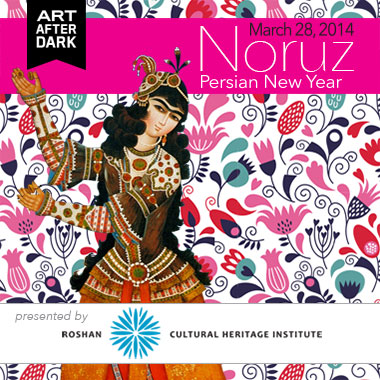 Presented by Roshan Cultural Heritage Institute, the 2014 Persian Culture Program Series featured three major events designed to promote and share the richness of Persian art, culture and traditions. The Bank of Hawaii Family Sunday: Noruz on March 16 and ARTafterDARK: Roshan Institute Noruz on March 28 celebrated the Persian New Year through a variety of activities, demonstrations and performances as well as the traditional Haftsin spread. The first Persian Screen Film Festival from September 6-12 showcased four award-winning films that explore Iranian culture and society.
Presented by Roshan Cultural Heritage Institute, the 2014 Persian Culture Program Series featured three major events designed to promote and share the richness of Persian art, culture and traditions. The Bank of Hawaii Family Sunday: Noruz on March 16 and ARTafterDARK: Roshan Institute Noruz on March 28 celebrated the Persian New Year through a variety of activities, demonstrations and performances as well as the traditional Haftsin spread. The first Persian Screen Film Festival from September 6-12 showcased four award-winning films that explore Iranian culture and society.
Roshan Cultural Heritage Institute supported the celebration of Noruz at the March 2010 “ARTafterDARK” event. ARTafterDARK is a monthly party designed to encourage local support and exploration of the arts. The Noruz event took place on March 26 and included a formal presentation of the Haftsin, a live performance by Persian students active in the University of Hawaii Theater, Persian music, and a Persian inspired menu. The event was extremely well attended and highly acclaimed by the community.
In 2009, Roshan Cultural Heritage Institute and its Chair/President, Dr. Elahé Omidyar Mir-Djalali, initiated and sponsored the first ever celebration of Noruz at the Honolulu Academy of Art. Guests enjoyed the traditional Haftsin table and Persian cultural activities including poetry, music and food.

The International Qajar Studies Association (IQSA) is dedicated to promoting the study of the Qajar era and to sponsoring research, publications and discussion of topics related to the Qajars and the Qajar period. Roshan Cultural Heritage Institute provided support toward the Fourteenth IQSA Conference on May 30-31, 2014 at the Iranistik Institute of the Otto-Friedrich University in Bamberg, Germany and the publication of the 2014-2015 IQSA Journal. Chaired by Professor Houchang Chehabi and Dr. Roxane Haag-Higuchi, the conference focused on the theme of “Literature and Writing in Qajar Iran.” The keynote speech on “Poet-Laureate Bahar in the Constitutional Era” was delivered by Professor Homa Katouzian (University of Oxford), and was followed by several engaging panels including presentations by Professor Abbas Amanat (Yale University), Dr. Roxane Haag-Higuchi (Bamberg University), Professor Todd Lawson (Toronto University), Dr. Tomoko Morikawa (Hokkaido University), Mira Xenia Schwerda (Princeton University), and Dr. Simin Fasihi (Al-Zahra University). Professor Manoutchehr Eskandari-Qajar, President of IQSA, was also a keynote speaker. The 2014-2015 IQSA Journal was released in fall 2015.
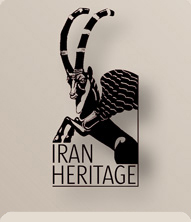
Through a partnership with Iran Heritage Foundation, a non-political UK registered charity, Roshan Cultural Heritage Institute sponsored a number of cultural and scholarly activities.
Private Lives and Public Spaces in Modern Iran – Organized by the Iran Heritage Foundation, Roshan Cultural Heritage Institute and the Persian Cultural Foundation in collaboration with the Oriental Institute, St. Anthony’s College, and Wadham College at the University of Oxford. The July 7-10, 2005 conference provided an intense intellectual setting for the exploration of aspects of everyday life in nineteenth – and twentieth-century Iran. In additional to prominent Iranian Studies scholars, the conference brought to Oxford a number of promising Ph.D. students who are writing dissertations that deal with issues rarely explored by scholars of Iran.
Abbas Kiarostami: Visions of the Artist Program – Co-organized by the Victoria and Albert Museum and the Iran Heritage Foundation, the program included a series of London-wide events held from April through June 2005 celebrating the achievements of Abbas Kiarostami and his impact on contemporary culture and society. Critically acclaimed filmmaker, artist, photographer and poet, Abbas Kiarostami is the most internationally celebrated Iranian cultural figure of the past and current century. The program consisted of two exhibitions of Kiarostami’s photographs entitled “Trees in Snow,” the world premiere of his “Forest Without Trees” installation, the U.K. premiere of “Kiarostami’s Ta’ziyeh” installation, a conference entitled “Abbas Kiarostami: Image, Voice and Vision,” a complete film retrospective of films directed by Kiarostami, a complete file retrospective of films for which Kiarostami had written the script, the publication of two books and two special issues of journals about the work of the artist, and four in-conversation sessions with the artist.
Historiography and Political Culture in 20th Century Iran – Organized by the Iran Heritage Foundation and the Oriental Institute (University of Oxford), this conference was held at Wadham College on September 17-18, 2004. This event brought together leading historians from Iran, Europe and the United States to discuss different readings of modern Iranian historiography and the resulting interpretations of Iran’s political culture throughout its long history. Contributors included Kamran Scot Aghaie, Abbas Amanat, Ahmad Ashraf, Touraj Atabaki, Oliver Bast, Kaveh Bayat, Houchang Chehabi, Afshin Marashi and Afsaneh Najmabadi. Touraj Atabaki was the editor of the publication of the conference proceedings.
Nizami Ganjavi: Artistic and Humanistic Aspects of the Khamsa – Organized by the Iran Heritage Foundation and Faculty of Oriental Studies (University of Cambridge), this conference was held at the University of Cambridge on September 9-10, 2004. Contributors included Leili Anvar-Chenderoff, Michael Barry, Christoph Buergel, Mario Casari, Patrick Franke, Julie Misami, Angelo Piemontese, Alain Richard, Christine van Ruymbeke, Carlo Saccone, Asghar Seyed-Gorab, Kamran Talatoff, Ziva Vesel and Renate Wursch. Mr. Buergel and Ms. Van Ruymbeke were editors of the publication of the conference proceedings.
The Study of Persian Culture in the West. Sixteenth to Early Twentieth Century – Organized jointly by the Iran Heritage Foundation and in association with Roshan Cultural Heritage Institute, this conference took place from June 24-27, 2004 in St. Petersburg, Russia, in the Hermitage Theatre of the State Hermitage Museum. The purpose of this conference was to investigate the history of the study of Persian history, literature, art and culture from the 16th century to the end of the First World War, and to publish a selection of the papers in book form.
Sadeq Hedayat Centenary Conference – Organized by the Faculty of Oriental Studies, University of Oxford, the conference was sponsored by the Middles East Centre of St. Antony’s College, Iran Heritage Foundation and Roshan Cultural Heritage Institute. The conference was held on March 28-29, 2003 at St. Anthony’s, with 16 guest speakers (and three guest observers) from Britain, France, Iran, the United States and Canada. It was an international conference to celebrate the centenary of Sadeq Hedayat’s birth and discuss various aspects of his life and works.
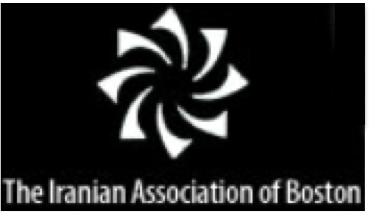
Between 2000 and 2003, Roshan Cultural Heritage Institute made major contributions to the The Iranian Association of Boston towards the construction of an Iranian Cultural Community Center in Watertown, Massachusetts. The President of the IAB, Soheila Shafai, announced the gift to the community at an IAB fundraiser in 2006. As a consequence of Roshan Cultural Heritage Institute’s matching grants awarded to IAB and the challenge presented to the community, the association’s efforts resulted in raising a total of $300,000 for the project during 2006. The community center is a place where Iranian Americans can come together and keep the Persian tradition alive by inviting the Boston community to participate in cultural and educational activities.

The Iranian Culture and Art Club (ICAC) of Fresno has been promoting cultural awareness the Iranian culture, arts and customs since 1990. It provides bilingual (English/Persian) lectures and performance series with dynamic artists, writers, poets and scholars to the general public of the San Joaquin Valley. In addition, ICAC offers Persian language, dance, theater, music and poetry classes to children and adults. Parvin Malek is the Founder and Executive Director of ICAC.
ICAC has been supported by Roshan Cultural Heritage Institute since 2008. Our grants have made possible the acquisition of educational materials to increase Persian language advancement, dance instructors for Persian dance workshops, props and costumes for Persian cultural performances, and Roshan Institute Achievement Awards for outstanding students.
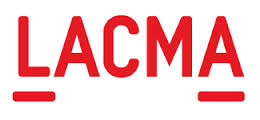
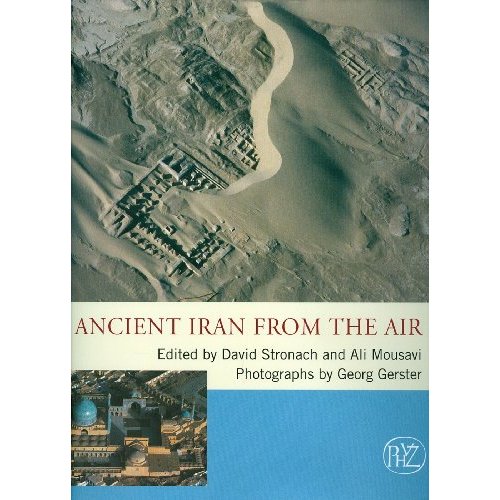 Dr. Ali Mousavi, Assistant Curator of Ancient Near Eastern Art at the Los Angeles County Museum of Art, was awarded a grant in 2012 to support the publication of Ancient Iran from the Air (Philipp von Zabern, 2012) with Professor Emeritus David Stronach of UC Berkeley. This book is the English language version of “Irans Erbe” published in German in 2009 and features many of the more exceptional landscapes and monuments of Iran as seen through the lens of the world’s foremost aerial photographer, George Gerster. Dr. Mousavi is currently Lecturer in Iranian Archaeology in the Department of Near Eastern Languages and Cultures at UCLA.
Dr. Ali Mousavi, Assistant Curator of Ancient Near Eastern Art at the Los Angeles County Museum of Art, was awarded a grant in 2012 to support the publication of Ancient Iran from the Air (Philipp von Zabern, 2012) with Professor Emeritus David Stronach of UC Berkeley. This book is the English language version of “Irans Erbe” published in German in 2009 and features many of the more exceptional landscapes and monuments of Iran as seen through the lens of the world’s foremost aerial photographer, George Gerster. Dr. Mousavi is currently Lecturer in Iranian Archaeology in the Department of Near Eastern Languages and Cultures at UCLA.

In 2011, Roshan Cultural Heritage Institute established the Elahé Omidyar Mir-Djalali Fund at the Louvre Museum in honor of its founding Chair and President. The Fund supports Persian Programs including exhibitions, research projects, performances and scholarly events that promote Persian art and culture as well as annual Elahé Omidyar Mir-Djalali Fellowships for outstanding scholars and curators working on Persian art in the Department of Islamic Art and in the Department of Near Eastern Antiquities. In 2021, Roshan Cultural Heritage Institute provided an additional $2.3 million grant to expand these annual activities at the Louvre.
The Louvre’s important collection of Persian art is presented in its Department of Near Eastern Antiquities and Department of Islamic Art, and covers ancient Iranian civilizations to the late 17th century. It includes works from excavations at Susa as well as ceramics, manuscripts, metalware and textiles from the Persian Empire. Marielle Pic is Director of the Department of Near Eastern Antiquities. Since January 2014, Yannick Lintz is Director of the Department of Islamic Art whose galleries opened in September 2012. She is also a faculty member at the Université Paris I – Panthéon-Sorbonne and a scholar of Achaemenid Persia.
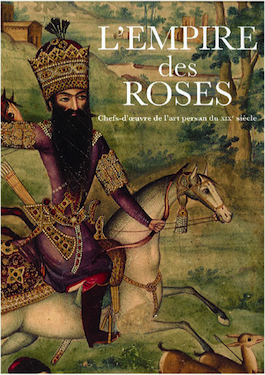 A large-scale exhibition on Qajar Art, made possible by the Elahé Omidyar Mir-Djalali Fund, took place March 28-July 23, 2018, at the Louvre-Lens museum, north of France. The exhibition, “The Rose Empire: Masterpieces of 19th-Century Persian Art” was a comprehensive and unprecedented overview of Qajar art, bringing to light over 400 unpublished artworks from the Qajar era (1786-1925). Alongside the exhibition, curated by Gwenaëlle Fellinger, the museum organized a series of events and conferences, including an international colloquium reviewing current research on the art of the Qajar dynasty that took place on June 21-23, 2018.
A large-scale exhibition on Qajar Art, made possible by the Elahé Omidyar Mir-Djalali Fund, took place March 28-July 23, 2018, at the Louvre-Lens museum, north of France. The exhibition, “The Rose Empire: Masterpieces of 19th-Century Persian Art” was a comprehensive and unprecedented overview of Qajar art, bringing to light over 400 unpublished artworks from the Qajar era (1786-1925). Alongside the exhibition, curated by Gwenaëlle Fellinger, the museum organized a series of events and conferences, including an international colloquium reviewing current research on the art of the Qajar dynasty that took place on June 21-23, 2018.
In April 2017, the Louvre Endowment Fund held an invitation-only event to celebrate five years of educational and scientific partnership with Roshan Cultural Heritage Institute, since the establishment of the Elahé Omidyar Mir-Djalali Fund. The event included presentations of five of the main projects supported by the Fund and a private guided tour of the Department of Near Eastern Antiquities.
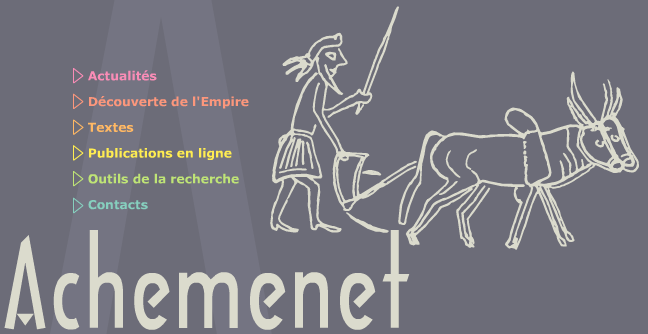 Roshan Cultural Heritage Institute awarded a grant in 2014 to support the first Elahé Omidyar Mir-Djalali Fellowship for Tytus Mikolajczak, Ph.D. candidate in the Department of Near Eastern Languages and Civilizations at The University of Chicago. During the fellowship, Mr. Mikolajczak was based at the Oriental Institute Museum, where he studied and documented approximately 300 Achaemenid objects in the museum’s collections in view of their publication on the Achemenet Program website, a research initiative managed by the Louvre. His project directors were: Professor Emeritus Matthew Stolper (Oriental Institute) and Dr. Jack Green (Oriental Institute Museum), Professor Emeritus Pierre Briant (Collège de France) and Ms. Yannick Lintz (Department of Islamic Art, Louvre).
Roshan Cultural Heritage Institute awarded a grant in 2014 to support the first Elahé Omidyar Mir-Djalali Fellowship for Tytus Mikolajczak, Ph.D. candidate in the Department of Near Eastern Languages and Civilizations at The University of Chicago. During the fellowship, Mr. Mikolajczak was based at the Oriental Institute Museum, where he studied and documented approximately 300 Achaemenid objects in the museum’s collections in view of their publication on the Achemenet Program website, a research initiative managed by the Louvre. His project directors were: Professor Emeritus Matthew Stolper (Oriental Institute) and Dr. Jack Green (Oriental Institute Museum), Professor Emeritus Pierre Briant (Collège de France) and Ms. Yannick Lintz (Department of Islamic Art, Louvre).
Persian Programs and Fellowships made possible through the Elahé Omidyar Mir-Djalali Fund to date include:
2021
- Publication of Islametal book in English
- Renewed fellowship to Clélia Paladre for the SEPIA project
- Day in Persian Art: guided tours in the Departments of Near Eastern Antiquities and Islamic Art in celebration of Noruz
2020
- Publication of the Qajar Art Exhibition Catalog in English
- Fellowship to Clélia Paladre for the Susa Excavations Photographic Images and Archives (SEPIA) project
- Digitization of Godard’s archives
2018
- Qajar Art exhibition, colloquium and publications
- Fellowship to Carol Guillaume for the Qajar Art project
- Publication of Susa royal inscriptions
- Day in Persian Art: guided tours in the Departments of Near Eastern Antiquities and Islamic Art in celebration of Noruz
2017
- Publication and re-editing of the proto-Elamite tablets
- 3D reconstitution and interactive presentation of the Palace of Darius the Great
- Publication of Susa royal inscriptions
- Publication of Godard’s archives
- Fellowship to Dr. Maryam Kolbadinejad for the Medieval Kashi tiles project
2016
- ISLAMETAL research project on Iranian metalwares
- Medieval Kashi project on Iranian luster ceramics
- Day in Persian Art: guided tours in the Departments of Near Eastern Antiquities and Islamic Art in celebration of Noruz
- Qajar Art in French museums project and fellowship to Dominique Misigaro
- 3D reconstitution and interactive presentation of the Palace of Darius the Great at Susa
2015
- ISLAMETAL research project on Iranian metalwares and postdoctoral fellowship to Dr. Vana Orfanou
- Publication and re-editing of the Proto-Elamite tablets
- Medieval Kashi project on Iranian luster ceramics
- Day in Persian Art: guided tours in the Departments of Near Eastern Antiquities and Islamic Art in celebration of Noruz
- Rayy project on the archeological materials discovered by Erich Schmidt
2014
- ISLAMETAL research project and postdoctoral fellowship to Dr. Ziad El-Morr in the Department of Islamic Art
- “Persian Voices”: two concerts of classical and contemporary Persian music featuring vocalists Pantea Alvandipour and Maede Tabatabai Niya, accompanied by Siamak Jahangiry (ney), Maryam Gharasou (tar lute), Ali Bahrami Fard (santour cithara) and Pasha Karami (percussions)
- Persian art tours in the Departments of Near Eastern Antiquities and Islamic Art on the occasion of Noruz and International Women’s Day
- Presentation by Iranian artist Shirin Neshat, “Shirin Neshat: Portraits of Women”
2012
- English and French editions of “Islamic Art at the Musée du Louvre” (“Les Arts de l’Islam au musée du Louvre”), the first major catalogue dedicated to the collection, published in conjunction with the opening of the Louvre’s new Islamic Art wing in September 2012
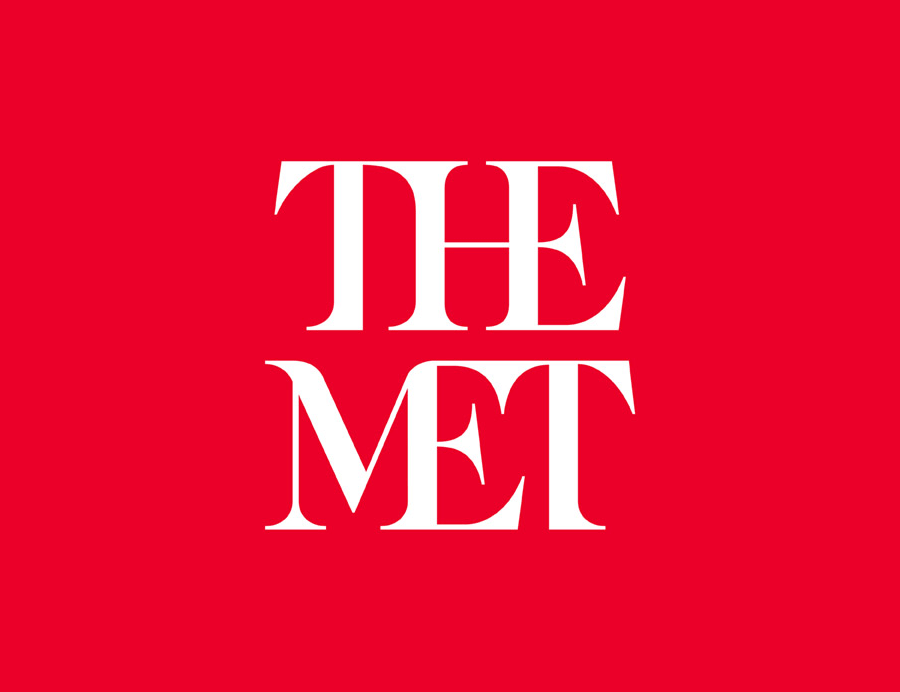
The Metropolitan Museum of Art is one of the world’s leading art museums, with a collection spanning more than 5,000 years of world culture, from prehistory to the present. Its collection of Islamic art is the most comprehensive in the world. It includes more than 12,000 of the finest objects, dating from the 7th to the 20th century. Outstanding holdings include the collections of more than 450 Islamic carpets; pages from a sumptuous copy of the Shahnameh, created for Shah Tahmasp (1514-76); and a 14th-century glazed ceramic mihrab, or prayer niche, from a theological school in Isfahan.
In 2015, Roshan Cultural Heritage Institute provided a grant to The Metropolitan Museum of Art in support of three projects related to Persian arts and culture: a digital publication cataloguing the Museum’s collection of 639 coins excavated at the Iranian city of Nishapur, Iran, between 1935 and 1948; and two events planned in conjunction of the exhibition Court and Cosmos: The Great Age of the Seljuqs, from April 26 to July 24, 2016. The events included Feathers of Fire, a cinematic shadow-play adoption of a tale from the Shahnameh by Iranian artist Hamid Rahmanian on May 15, as part of “Sunday at the MET”; and a scholarly Symposium on June 9-11, with Drs. Robert and Carole Hillenbrand of the Institute of Iranian Studies at the University of St. Andrews as keynote speakers. Feathers of Fire was performed in front of a standing room audience of 760 at the MET’s Grace Rainey Rogers Auditorium. Over 330 attendees each day of the Symposium, where a group of 12 international scholars delivered presentations on topics ranging from Hamadan, the Seljuq capital in Iran, to Seljuq royal propaganda, Seljuq astronomy and the Shahnameh. Videos of the presentations are available online.

Support from Roshan Cultural Heritage Institute to the Network for the Promotion of Asian Cinema (NETPAC) in 2010-2012 made possible “Understanding Persian Culture through Film,” a series including 32 critically-acclaimed Iranian films with introductions, a symposium, and a multitude of educational resources. During the symposium, held on February 26, 2011, Mohammad Atebbai, Tehran-based film critic, festival organizer and director of Iranian Independents, presented an illustrated lecture “New Developments in Iranian Theatre and Film.” He joined a panel of scholars including Dr. Kaveh Ehsani, editor and Assistant Professor of International Studies, DePaul University; Dr. Wimal Dissanayake, Professor of Intercultural Studies, University of Hawaii at Manoa, East West Center; Dr. Norma Claire Moruzzi, Associate Professor of Political Science (Gender and Women’s Studies) and International Studies Program Director, University of Illinois; and Alissa Simon, film reviewer for VARIETY and senior film programmer for the Palm Springs International Film Festival. Topics of discussion included Iranian Film History, Contemporary Iranian Urban Society, Culturally Specific and Universal Experiences, and Women in Film and Society.
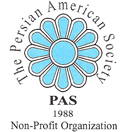
The mission of The Persian American Society is to enhance the intercultural understanding and appreciation; to help the younger generation develop a positive self identity; and to preserve Persian cultural heritage and language.
Roshan Cultural Heritage Institute awarded a grant in 2008 to The Persian American Society to support an event honoring Dr. Richard Nelson Frye, Aga Khan Professor Emeritus of Iranian Studies at Harvard University. This tribute dinner was held at Notre Dame de Namur University in California on March 1, 2008.

The Persian Heritage Foundation, originally called The Yarshater Fund, was established through the efforts of Professor Ehsan Yarshater in 1983 to conduct and carry out research on all aspects of Iranian world.
Roshan Cultural Heritage Institute awarded a grant to the Persian Heritage Foundation in support of the publication of Dictionnaire du Coran (Koran Dictionary) and another grant in support of the upcoming publication of Le Coran des Historiens (Qur’an of the Hi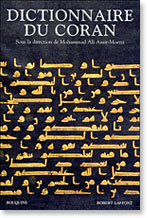 storians). Both projects are under the direction of Professor Mohammad-Ali Amir-Moezzi, an outstanding scholar of Islam and Shi’ism and Director of Study in the Section des sciences religieuses at the École Pratique des Hautes Études (EPHE) in Paris, France. Open to non-specialist readers as well as to students of Islam and religious historians, Dictionnaire du Coran is comprised of over 500 entries by an international team of authors, among the best specialists from various branches of Islamic and Koranic studies. Its 1,024 pages contain hundreds of bibliographical references and an exhaustive index making the dictionary an indispensable tool for research and an asset for all libraries. The entries relate to Koranic data: religious topics, moral and anthropological concepts, elements of nature, characters and figures, historical information, etc. Extra-Koranic data with regards to Islam, such as: intellectual and spiritual disciplines (theology, philosophy, exegesis, law, mysticism), history and text filiations, manuscripts, arts and literature, translations, different Koranic schools and their relations to other religions, are also covered. Le Coran des Historiens is distinct for its objective approaches to the subject, which includes critical research, based on historical and philological study of multiple Islamic sources available. The objective of Le Coran des Historiens is to provide a general audience with a clear, accessible, yet scientific, rigorous research.
storians). Both projects are under the direction of Professor Mohammad-Ali Amir-Moezzi, an outstanding scholar of Islam and Shi’ism and Director of Study in the Section des sciences religieuses at the École Pratique des Hautes Études (EPHE) in Paris, France. Open to non-specialist readers as well as to students of Islam and religious historians, Dictionnaire du Coran is comprised of over 500 entries by an international team of authors, among the best specialists from various branches of Islamic and Koranic studies. Its 1,024 pages contain hundreds of bibliographical references and an exhaustive index making the dictionary an indispensable tool for research and an asset for all libraries. The entries relate to Koranic data: religious topics, moral and anthropological concepts, elements of nature, characters and figures, historical information, etc. Extra-Koranic data with regards to Islam, such as: intellectual and spiritual disciplines (theology, philosophy, exegesis, law, mysticism), history and text filiations, manuscripts, arts and literature, translations, different Koranic schools and their relations to other religions, are also covered. Le Coran des Historiens is distinct for its objective approaches to the subject, which includes critical research, based on historical and philological study of multiple Islamic sources available. The objective of Le Coran des Historiens is to provide a general audience with a clear, accessible, yet scientific, rigorous research.
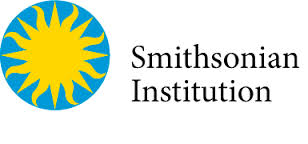
The Smithsonian Institution has two museums of Asian art: the Freer Gallery of Art, which opened to the public in 1923, and the Arthur M. Sackler Gallery, which welcomed its first visitors in 1987. Their collections include important holdings from the Ancient Near East and the Islamic World. Dr. Massumeh Farhad is Chief Curator and the Ebrahimi Family Curator of Persian, Arab and Turkish Art at the Freer | Sackler Galleries.
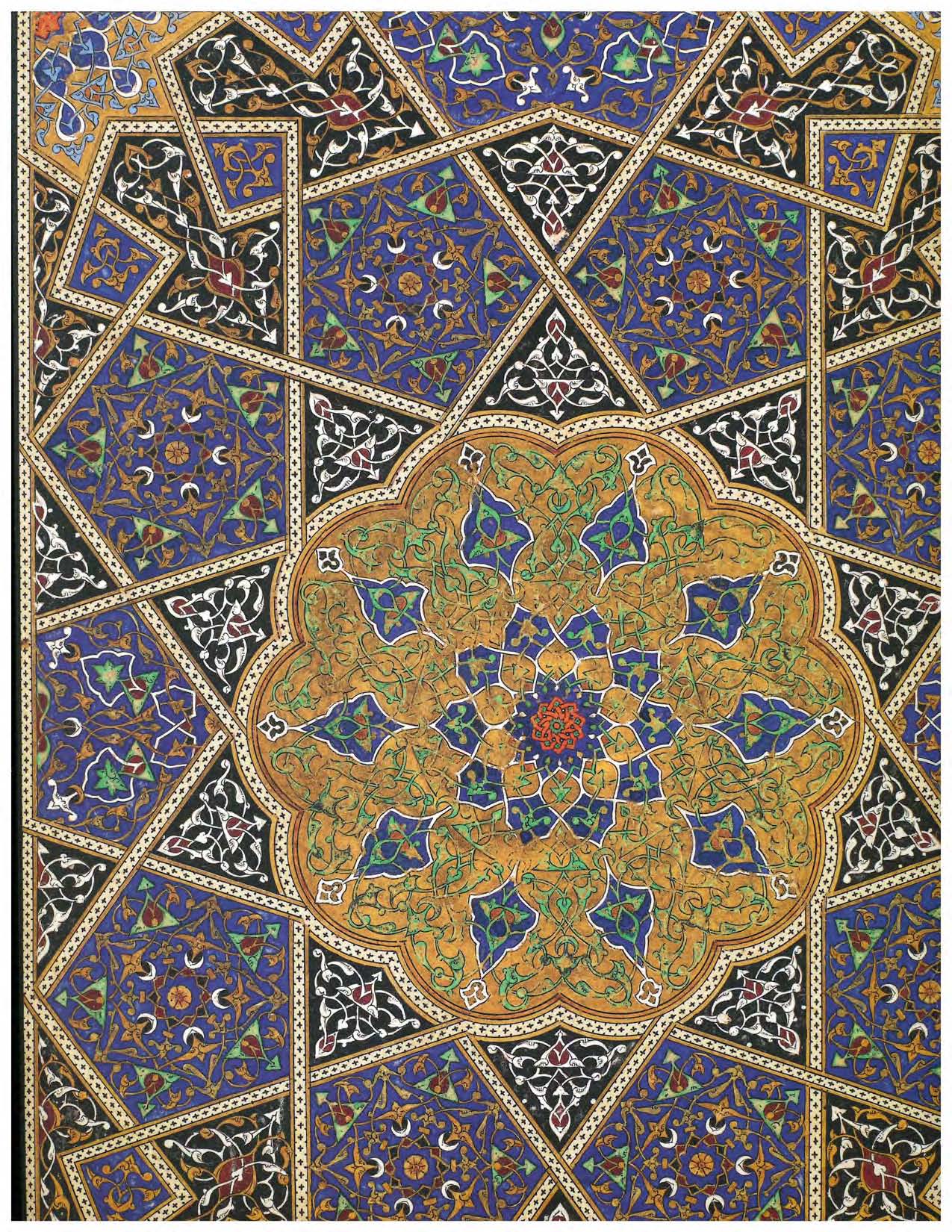 In 2016, Roshan Cultural Heritage Institute awarded a grant in support of the scholarly catalog accompanying the exhibition, The Art of the Qur’an: Treasures from the Museum of Turkish and Islamic Arts, opening October 22, 2016 until February 20, 2017, at the Arthur M. Sackler Gallery. The event was the first-ever international loan exhibition of some of the finest Qur’ans in the world. On display are over 60 works, ranging in date from the late seventh to the seventeenth centuries and representing a geographical area that covers the Arab world, Iran and Central Asia. Celebrated for their superb calligraphy and lavish illumination, these manuscripts are critical to the history of the arts of the book. They were once the prized possessions of Ottoman sultans and the ruling elite, who donated their Qur’ans to various institutions to express their personal piety and secure political power. Each manuscript tells a unique story, which is explored in this once-in-a-lifetime exhibition. Edited by Dr. Massumeh Farhad, the lavishly illustrated catalog includes six essays from various scholars and a discussion with color photographs of each object on display.
In 2016, Roshan Cultural Heritage Institute awarded a grant in support of the scholarly catalog accompanying the exhibition, The Art of the Qur’an: Treasures from the Museum of Turkish and Islamic Arts, opening October 22, 2016 until February 20, 2017, at the Arthur M. Sackler Gallery. The event was the first-ever international loan exhibition of some of the finest Qur’ans in the world. On display are over 60 works, ranging in date from the late seventh to the seventeenth centuries and representing a geographical area that covers the Arab world, Iran and Central Asia. Celebrated for their superb calligraphy and lavish illumination, these manuscripts are critical to the history of the arts of the book. They were once the prized possessions of Ottoman sultans and the ruling elite, who donated their Qur’ans to various institutions to express their personal piety and secure political power. Each manuscript tells a unique story, which is explored in this once-in-a-lifetime exhibition. Edited by Dr. Massumeh Farhad, the lavishly illustrated catalog includes six essays from various scholars and a discussion with color photographs of each object on display.
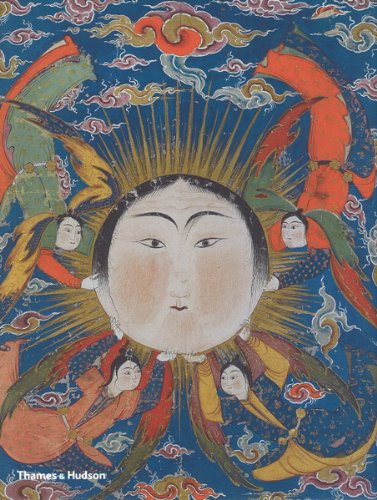 Roshan Cultural Heritage Institute was the sponsor of the catalog accompanying the exhibition, Falnama: The Book of Omens, displayed at the Arthur M. Sackler Gallery from October 2009 to January 2010. This event was the first-ever exhibition dedicated to these rare works – a group of unusual, illustrated manuscripts that were once used by sultans, shahs and commoners to explore the unknown – created in 16th and 17th century Iran and Turkey. The manuscripts contain a range of images, from planets and zodiac signs to the lives and deeds of Abrahmic and Islamic saints and prophets, and were meant to aid a seeker in the process of making difficult decisions—from embarking on a voyage to waging war against an enemy. When seen as a group, the images suggest a vibrant and shared religious culture, embracing universal moral and ethical values. The catalog was co-edited by Dr. Massumeh Farhad and Serpil Bagci, Professor of Art History at Hacettepe University in Ankara, Turkey. It offered the first comprehensive exploration of the Falnama and the practice of bibliomancy in Islamic culture. Essays by a number of eminent historians shed light on a chapter of Ottoman and Safavid history that is largely unexplored.
Roshan Cultural Heritage Institute was the sponsor of the catalog accompanying the exhibition, Falnama: The Book of Omens, displayed at the Arthur M. Sackler Gallery from October 2009 to January 2010. This event was the first-ever exhibition dedicated to these rare works – a group of unusual, illustrated manuscripts that were once used by sultans, shahs and commoners to explore the unknown – created in 16th and 17th century Iran and Turkey. The manuscripts contain a range of images, from planets and zodiac signs to the lives and deeds of Abrahmic and Islamic saints and prophets, and were meant to aid a seeker in the process of making difficult decisions—from embarking on a voyage to waging war against an enemy. When seen as a group, the images suggest a vibrant and shared religious culture, embracing universal moral and ethical values. The catalog was co-edited by Dr. Massumeh Farhad and Serpil Bagci, Professor of Art History at Hacettepe University in Ankara, Turkey. It offered the first comprehensive exploration of the Falnama and the practice of bibliomancy in Islamic culture. Essays by a number of eminent historians shed light on a chapter of Ottoman and Safavid history that is largely unexplored.
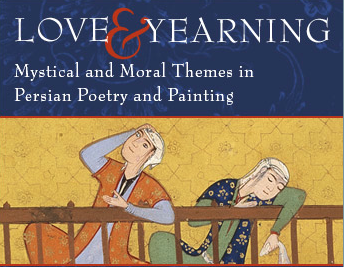 Roshan Cultural Heritage Institute supported the exhibition, Love and Yearning: Mystic and Moral Themes in Persian Poetry and Painting, curated by Dr. Massumeh Farhad, and on display from August 30, 2003 to February 22, 2004 at the Arthur M. Sackler Gallery. Twenty-six illustrated manuscripts demonstrated how 15th to 17th-century artists transformed the rich imagery of mystical concepts found in Persian lyrical poetry into stylized, meticulously detailed and colorful images. Persian lyrical poetry flourished in the late 9th century at the provincial courts of eastern Iran, where poets used the context of romantic drama to express universal and timeless emotions such as loyalty, generosity and humility, love, yearning and loss. As ideal love and courtly conduct depended on many of the same principles, Persian lyrical poetry also became an appropriate guise for expressing larger ethical ideals. An on-line interactive program on the Haft Awrang (Seven Thrones) was developed in conjunction with the exhibit and continues to be featured on the Freer/Sackler Galleries website.
Roshan Cultural Heritage Institute supported the exhibition, Love and Yearning: Mystic and Moral Themes in Persian Poetry and Painting, curated by Dr. Massumeh Farhad, and on display from August 30, 2003 to February 22, 2004 at the Arthur M. Sackler Gallery. Twenty-six illustrated manuscripts demonstrated how 15th to 17th-century artists transformed the rich imagery of mystical concepts found in Persian lyrical poetry into stylized, meticulously detailed and colorful images. Persian lyrical poetry flourished in the late 9th century at the provincial courts of eastern Iran, where poets used the context of romantic drama to express universal and timeless emotions such as loyalty, generosity and humility, love, yearning and loss. As ideal love and courtly conduct depended on many of the same principles, Persian lyrical poetry also became an appropriate guise for expressing larger ethical ideals. An on-line interactive program on the Haft Awrang (Seven Thrones) was developed in conjunction with the exhibit and continues to be featured on the Freer/Sackler Galleries website.

Roshan Cultural Heritage Institute Scholarship Fund
Roshan Institute Series for Artistic Excellence
Founded in 1978, St. Andrew’s Episcopal School is an independent, coeducational college preparatory school for students in Preschool through Grade Twelve. It is located in Potomac, Maryland.
In 2008, an endowed fund called Roshan Cultural Heritage Institute Scholarship Fund was established at St. Andrew’s as part of the school’s Touchstone Endowment Campaign. This endowment plays an important role in St. Andrew’s effort to encourage cultural diversity and awareness.
Roshan Cultural Heritage Institute has awarded a series of grants to St. Andrew’s Episcopal School since 2002 to increase cultural awareness through artistic excellence. The grants supported the continuation of the school’s annual art exhibition which showcases the work of professional artists from different cultures and provides a rich opportunity for the students and the surrounding Washington, D.C. community to learn from the work of diverse artists in that particular culture.
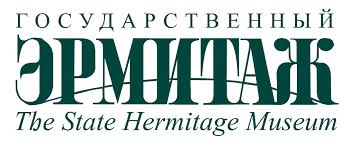
Roshan Cultural Heritage Institute supported the conference “The Study of Persian Culture in the West. Sixteenth to Early Twentieth Century” held at The State Hermitage Museum in St. Petersburg, Russia, from June 24 – 27, 2004 and organized in partnership with the Iran Heritage Foundation. The purpose of this conference was to investigate the history of the study of Persian History, literature, art and culture from the 16th century to the end of the First World War, and to publish a selection of the papers in book form.
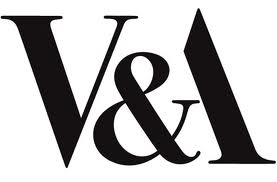
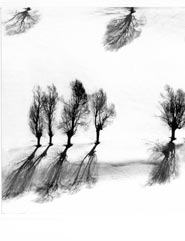 In 2005, Roshan Cultural Heritage Institute provided a grant toward the “Abbas Kiarostami: Visions of the Artist Program” at the Victoria and Albert Museum, organized in partnership the Iran Heritage Foundation. The program included a series of London-wide events celebrating the achievements of Abbas Kiarostami and his impact on contemporary culture and society: two exhibitions of Kiarostami’s photographs entitled “Trees in Snow,” the world premiere of his “Forest Without Trees” installation, the U.K. premiere of “Kiarostami’s Ta’ziyeh” installation, a conference entitled “Abbas Kiarostami: Image, Voice and Vision,” a complete film retrospective of films directed by Kiarostami, a complete file retrospective of films for which Kiarostami had written the script, the publication of two books and two special issues of journals about the work of the artist, and four in-conversation sessions with the artist.
In 2005, Roshan Cultural Heritage Institute provided a grant toward the “Abbas Kiarostami: Visions of the Artist Program” at the Victoria and Albert Museum, organized in partnership the Iran Heritage Foundation. The program included a series of London-wide events celebrating the achievements of Abbas Kiarostami and his impact on contemporary culture and society: two exhibitions of Kiarostami’s photographs entitled “Trees in Snow,” the world premiere of his “Forest Without Trees” installation, the U.K. premiere of “Kiarostami’s Ta’ziyeh” installation, a conference entitled “Abbas Kiarostami: Image, Voice and Vision,” a complete film retrospective of films directed by Kiarostami, a complete file retrospective of films for which Kiarostami had written the script, the publication of two books and two special issues of journals about the work of the artist, and four in-conversation sessions with the artist.

